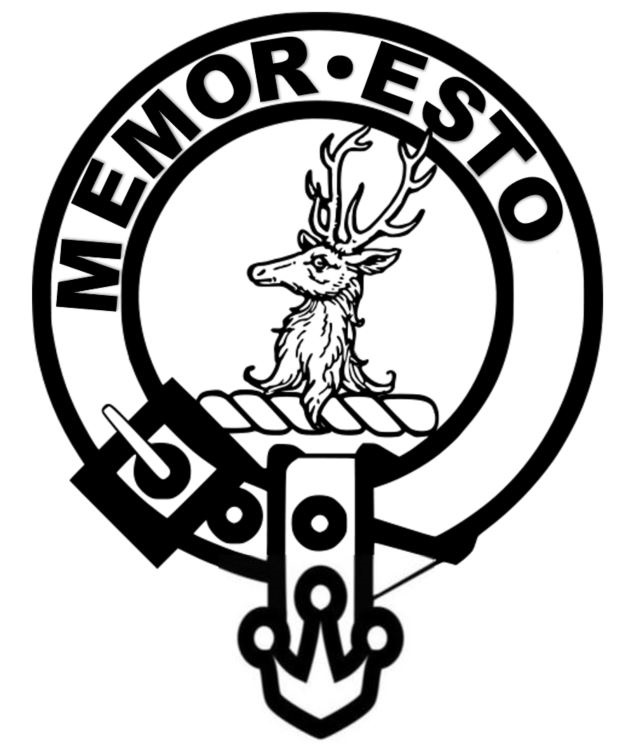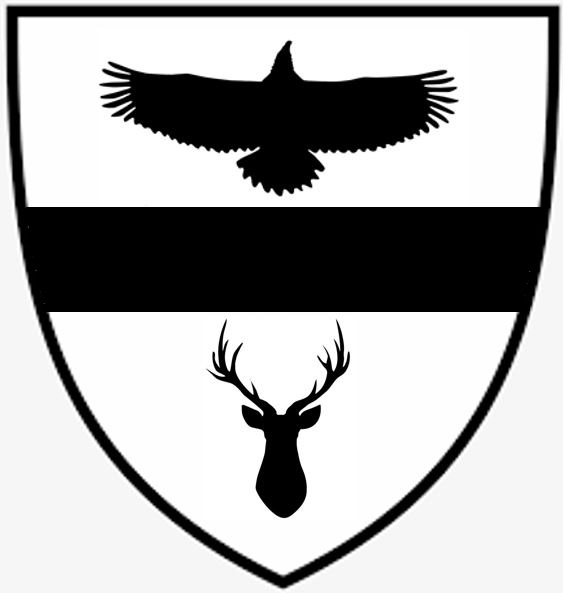INVERNESS Gaelic Name Inbhir Nis
Inverness, the opening (inbhir) of the Ness, is the largest town in the north of Scotland and the administrative centre for the Highlands and Islands. Standing at the northwestern extremity of the Great Glen, the natural rift through the Highlands that has provided a path for commerce and travel since man first came to Scotland.
Columba came through the Great Glen to the capital of the heathen Picts to convert their king (Bridei 555-84ad) to Christianity. Defence has played a prominent part in the city’s history, it has played a part in most all of the troubles of the north. In the nineteenth century the Caledonian Canal made it possible to travel and trade by water. The railway to Edinburgh in the south and Kyle (for Skye) to the west made Inverness the ‘Capital of the Highlands’.
The Castle and most of the town was re-built in the nineteenth century, it has a fine museum and is the home of ( The Northern Meeting ), one of the oldest and most important of piping competitions.
Scotland Introduction
Scotland, administrative division of the United Kingdom, occupying the northern third of the island of Great Britain. Scotland is bounded by England on the south, the Atlantic Ocean on the west, and the North Sea on the east. The total area is 78,772 sq km (30,414 sq mi), and the population (1991 preliminary) is about 4,957,289. The capital city is Edinburgh.
Land and Resources
Scotland includes 186 islands, most of which are categorized in three main groups: the Hebrides, the Orkney Islands, and the Shetland Islands. The sea deeply penetrates the coastline, forming narrow submerged valleys known as sea lochs, and broad indentations called firths.
Scotland’s terrain is divided into three regions: the Highlands, the Central Lowlands, and the Southern Uplands. The Highlands cover more than one-half of Scotland and include the Grampian Mountains. The range’s highest peak, Ben Nevis (1343 m/4406 ft), is also the highest in Great Britain. Scotland’s population is concentrated in the Central Lowlands, which include the cities of Glasgow and Edinburgh. The Southern Uplands consist primarily of a moorland plateau with valleys and mountainous outcroppings. Notable lakes in Scotland include Loch Lomond (the largest), Loch Ness, Loch Tay, and Loch Katrine. The Clyde River is the principal navigational river.
The country’s climate is subject to the influences of the surrounding seas, which cause temperate winters and cool summers. In Edinburgh the average January temperature is 3.5° C (38° F) and the average July temperature is 14.5° C (58° F). Annual precipitation ranges from 3810 mm (about 150 in) in the western Highlands to about 635 mm (about 25 in) in eastern areas.
Common plants include oak and conifer trees, heather, ferns, mosses, and grasses. The soil is generally rocky and infertile, but native vegetation provides adequate grazing grounds for livestock. Scotland has significant reserves of coal and large deposits of zinc, but one of its greatest resources is the enormous potential for hydroelectric power found in the northern regions. The area contains Britain’s largest hydroelectric generating stations.
Population
The people of Scotland are descendants of Picts, Celts, Scandinavians, and Romans. They divide themselves into Highlanders, who consider themselves of purer Celtic blood, and Lowlanders, who are largely of mixed background. Most Scots speak English, although many still speak the Scottish form of Gaelic. The Church of Scotland is the official state church, with the Roman Catholic church second in importance.
Education and Culture
Schools in Scotland are administered by the Scottish Education Department and by local education authorities. Of the eight universities, the oldest (University of Aberdeen, University of Edinburgh, University of Glasgow, and University of St. AnSaint Andrews founded in the 15th and 16th centuries.
The traditional Scottish clan is no longer a powerful social force in the country, but the solidarity associated with clan membership has expanded into a strong national pride. Popular sports include curling and golf, both of which originated in Scotland. Bagpipes, usually associated with Scottish music, were probably introduced by the Romans, who acquired them in the Middle East.
Government
Scotland is governed as an integral part of the United Kingdom. It is represented by 72 members in the British House of Commons and by 16 Scottish peers in the House of Lords. Scottish national affairs are administered by a British cabinet ministry, headed by the secretary of state for Scotland. Local government issues are regulated by the Scottish Development Department.
Economy
Primarily an industrial and commercial nation, Scotland is an important part of the economy of the United Kingdom. Chief exports are petroleum, natural gas and manufactured goods. Chief imports are food and iron. More than three-fourths of the land is used for agriculture, both farming and livestock raising, but the economy is also driven by profitable manufacturing, mining, forestry, and fishing industries. Scotland’s currency is the British pound (.66 British pounds equal U.S.$1; 1996).
History
Scotland was initially known as Caledonia after the Roman invasion of Britain in the first century AD. The people strongly resisted foreign rule for several centuries, and in 409 the Romans withdrew from Britain.
Power struggles and territorial disputes began immediately, and for several centuries neighboring groups vied for control over the area. At the beginning of the 6th century, the Scots, Celtic invaders from northern Ireland, established the kingdom known as Dalriada. Under the leadership of Duncan I in the early 11th century, the Scottish domains, thereafter known as Scotland, encompassed all the territory north of Solway Firth and the Tweed River.
The next few centuries marked an era of fundamental transformation of the ancient Celtic culture and institutions. Under the influence of several successive monarchs, Scotland increasingly came under the influence of English culture. Ecclesiastical reforms led to suppression of the Celtic religion, which was remodeled to conform with Roman Catholic practices; English and French languages pervaded the country; economic, judicial, legislative, and administrative reforms were based on English models.
Many Scottish people resented English interference in their national affairs, and a long period of dissent eventually led to the Scottish war of independence. The war began in 1296 under the leadership of Sir William Wallace. After Wallace’s death, Robert Bruce led the resistance and won many decisive battles against the English. Finally, in 1328, Edward III of England approved the Treaty of Northampton, granting Scotland recognition as an independent kingdom.
Friction between the two nations continued, however, and resulted in alternating episodes of English occupation and Scottish repossession of the land. In the 16th century the situation escalated during the Protestant Reformation in Scotland and the Counter Reformation led by Mary, Queen of Scots. After Mary’s exile and death, Scotland enjoyed several decades of tranquillity under the evenhanded rule of James VI, who in 1603 became king of England as James I.
Conflict in Scotland over taxes and religion during the 17th century rule of Charles I helped spark the English Revolution. For a brief time, England’s Oliver Cromwell imposed a single government on England and Scotland. Continued struggles with England and inner turmoil between Scottish clans in the Highlands and Lowlands soon led Scotland to separate from England again.
In 1707 the Scottish Parliament voted itself out of existence, and Scotland became part of the United Kingdom of Great Britain with guarantees of its own legal system and church polity. Thereafter, Scottish representatives sat in the British Parliament. The union was opposed by many of the Highland Scots, who led several 18th century rebellions. Following the defeat of the 1745 Rebellion, the government forced the breakup of the clan system in the Highlands.
Industrialization began in the late 18th century, and during the 19th century Scotland was transformed from an agricultural nation into an industrial one. Its textile, steel, and shipbuilding industries made major contributions to Britain’s imperial and commercial success during this period.
With the decline of Britain as a world power in the second half of the 20th century, Scottish nationalism once again became a significant political force. In the general elections of the mid-1970s, many people called for independence. In recent years, however, although the Scots continue to insist on unique provisions of law and local government, the drive for separation has been muted by increased prosperity.

